#1800s women's work
Text
The non-resplendid Outfit: What poor women wore in the mid to late 1800s, Victorian era

Housemaids, early 1860’s. They are dressed in their best for the photographer, but look at their hands. From Victorian Working Women. They could perhaps have scullury maids, who were a lower ranked of housemaid.

Fig. 1 - Washerwoman and young girl • Mid-1800's

Fig. 2 - From 'Street Life in London', 1877, by John Thomson and Adolphe Smith. "The accompanying photograph represents a second-hand clothes shop in a narrow thoroughfare of St. Giles."
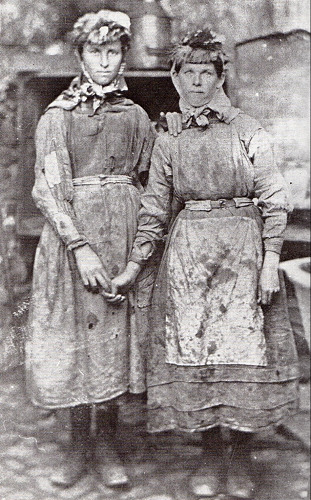
Fig. 3 - These women were referred to as "tip girls". Their job was to unload mine refuse from train cars and on to the "tip" of the mountains of mine waste. Tredegar, Wales, 1865. Photo by W. Clayton from Victorian Working Women
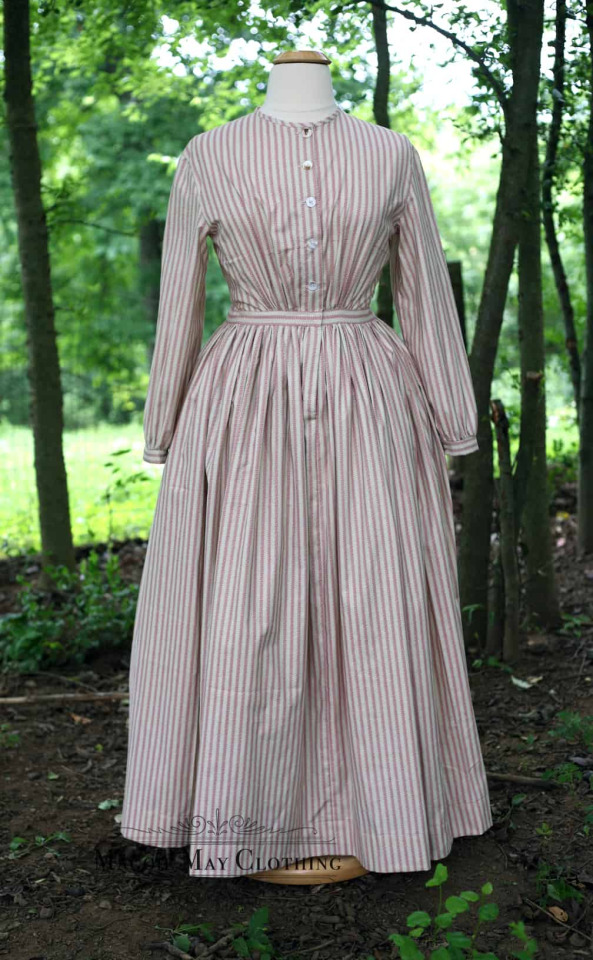
fig. 4 - This dress features a loose fitting, unlined bodice gathered gently under the bust and at the center back. The sleeves are cut moderately to encourage movement and feature a short cuff with button closure. The semi full skirt is gathered into a waistband and attached to the bodice. The skirt is hemmed to the ankle with a single turn hem. The gown closes at the center front with buttons. Shown over over a quilted petticoat and extra full petticoats. Typically worn between 1840 and 1890. This dress is a replica based on research.
Working class women in the Victorian era couldn't afford the latest fashions. They wore simple, practical clothing in a style dependent on their ooccupation. In figure 1, The woman is wearing a simple dress and cape. Her clothing looks clean because she's a washerwoman; her clothing only exposed to water and soap. Her dress is very similar to the one in figure 4.
In figure 2, the women working in the second-hand clothes shop are also performing work that isn't likely to soil their clothing. It's interesting to discover there were such shops. I always assumed poor women of this era made their own clothing.
A job such as handling coal (figure 3) was such dirty work that the clothing worn for it had to be made from thick, rough fabrics and cut loose to facilitate movement. The dirtier and more physically demanding the work, the rougher the clothing.
#fashion history#victorian era#working women#victorian work clothes#1800s women's work#victorian work dress#the resplendent outfit#victorian history#historic photographs#historic clothing#history of workers#women's history
68 notes
·
View notes
Text
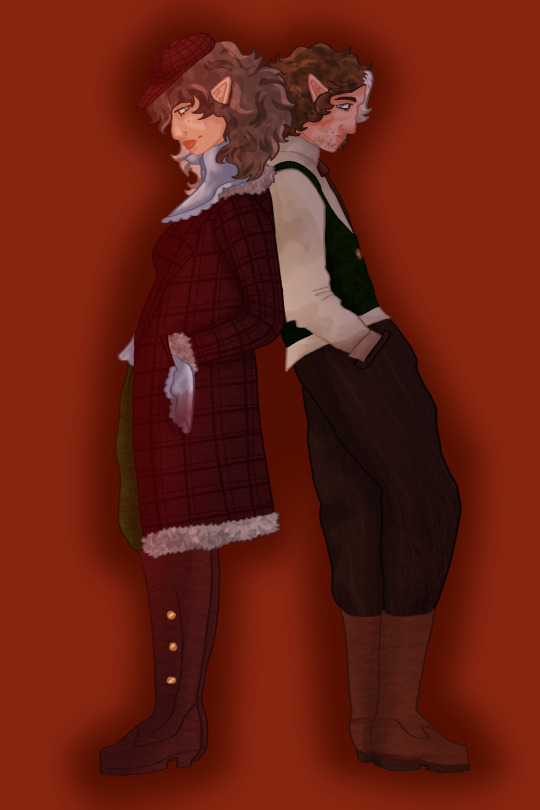
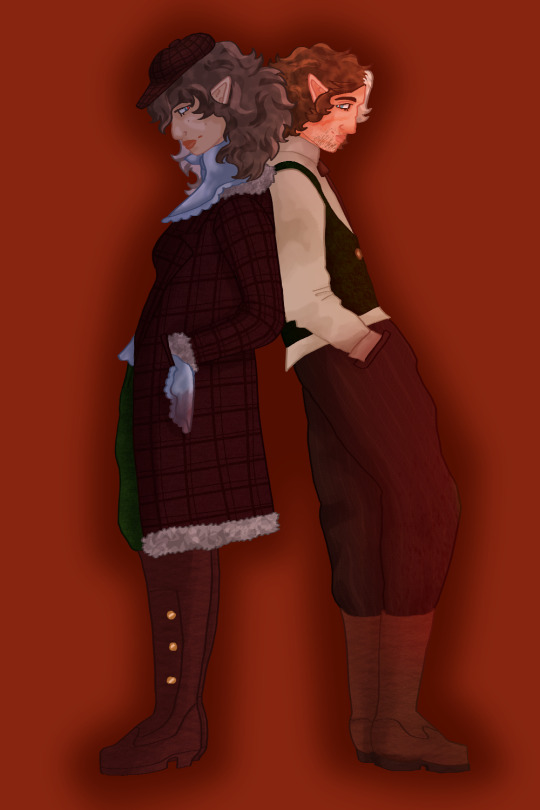
ok. tragically separated wwi era vampire twins.


#seabirds.txt#seabirds.art#mystery twins#gemeos do misterio#q!bagi#q!cellbit#qsmp#i did research 1920s era clothing for this but i based a lot of it off of their mc skins.#cellbit is a sailor turned vampire who ended up in europe during wwi after fighting naval battles at sea and never came home#bagi becomes a journalist to find him and stumbles across vampires along the way not realizing he had become a vampire too#design notes: this all started off of bagi's newsboy cap which was popular in the 1920s with working men. i put her in men's pants because#wanted to give this energy of working a job traditionally not worked by women at the time. <- women started campaigning to work as#journalists notably around the late 1800s and early 1900s (at least in the us and some european countries (couldnt find info on brazil))#i was thinking of nellie bly when thinking of what bagi would be doing in this au! she also has a bandana to hide her neck where her vampir#bite would be and a hanky for blood clean up. perhaps something from home. cellbit is not concerned with hiding his own neck. he's just#wearing a dress shirt LOL. i feel like cellbit would be fully embracing his vampiric tendencies at this point and a part of more vampire#society than human while for bagi it would be the other way around (she's still looking for him in the human world using vampire resources)#that is why he is so bloodstained. i feel like in his free time he would be freelancing detective work for other vampires maybe to gather u#favors or something similar. he's a little bit fancy because of this but still casual enough that there's no suit involved.
45 notes
·
View notes
Text
Mondays at work make me understand why Japanese office workers jump in front of trucks in hopes of being isekai’d to a fantasy land
#they should call me a firefighter for all these fires I be putting out#take me back to the 1800s when women didn’t have to work#last tag hot take but real I would love to cook and clean all day#work#isekai
22 notes
·
View notes
Text
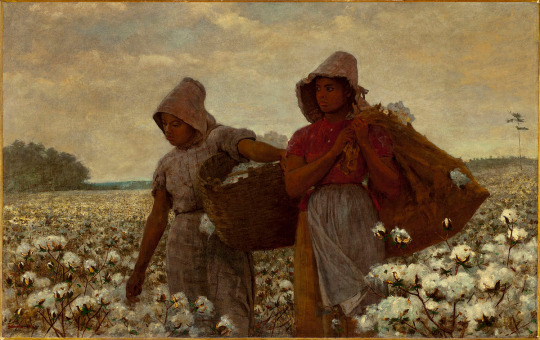
Winslow Homer (1836-1910)
"The Cotton Pickers" (1876)
Oil on canvas
Realism
Located in the Los Angeles County Museum of Art, Los Angeles, California, United States
#paintings#art#artwork#genre painting#genre scene#winslow homer#oil on canvas#fine art#museum#art gallery#american artist#cotton#farm work#black women#african american#clothing#clothes#1870s#late 1800s#late 19th century#america
126 notes
·
View notes
Text
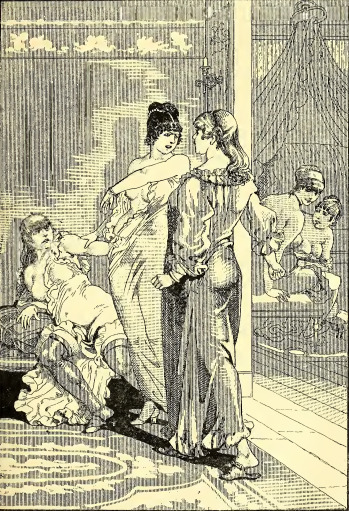
La Prostitution Contemporaine: Étude d'une question sociale (1884)
TRIBADES
Jealousy, between girls addicted to the vice of sapphism, often causes quarrels, and sometimes veritable duels, in which the most frequently used weapon is the hair comb.
An illustration of multiple lesbian sex workers, printed within "La Prostitution Contemporaine" by Léo Taxil in 1884, with translated caption.
19 notes
·
View notes
Text
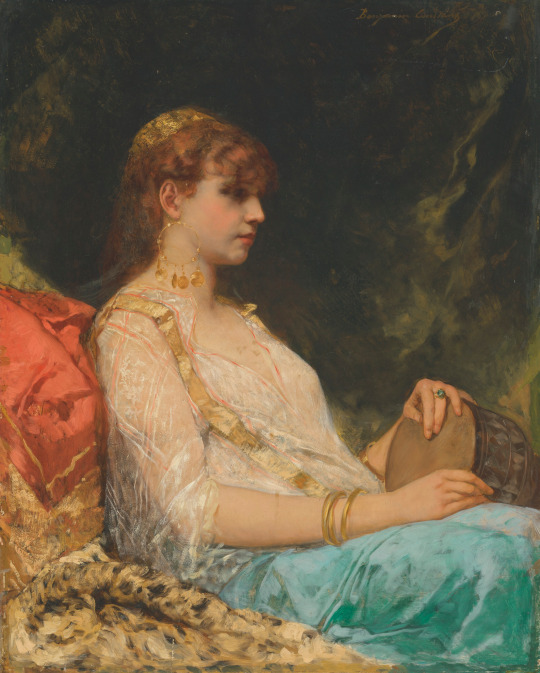
Jean-Joseph Benjamin-Constant (French, 1845-1902)
L'Orientale au Tambour, 1880
#Jean-Joseph Benjamin-Constant#L'Orientale au Tambour#oriental work#1800s#art#fine art#european art#classical art#oil painting#fine arts#female portrait#female#portrait#redhead#woman#redheaded woman#women in art#beautiful art
43 notes
·
View notes
Text
i just read all of Take no Kido in one sitting and. i am very upset with the ending. kunikida you owe me compensation for emotional damages
#dia's daydreams#japanese literature#doppo kunikida#literature#another one of his works 'Shōjikimono' had a similarly messed up ending also#this feels like it might be a commentary on how the traits which are encouraged in men and perpetuated by societal gender expectations (i.e#being stoic and moody) are actually harmful to women whom are subjected to such traits#however the men who don't know how to live life any other way continue the cycle of hurting women with these traits#and that's why the endings are so grim#which feels...weirdly progressive for the late 1800s#maybe this is just a really silly take from me?#i've never been much of an analyst#other ppl who have read these stories tell me what you think pls#and tell me if i've entirely misinterpreted the point lol
3 notes
·
View notes
Text
Had the most. Specific dream
#Late 1800s maybe early 1900s#two brothers. the older brother inherited a large company from their parents and is very wealthy#and he loves his younger brother very much. his younger brother is an absolute madlad though and LOVES model trains#and full size trains too ig. the younger brother somehow gets into some kind of train accident and loses function in one arm and#part of the function of one leg#years later and the health of the younger brother is further declining#so he and his brother go on a great train trip#while on the train (the older brother is struggling to properly care for the younger) they meet a woman#she is incredibly graceful and it turns out that she always wanted to be a ballerina#but she couldn’t make it in the big city#so instead she works as a sort of valet for older women who travel#taking the train from city to city and helping them load and unload off the train and navigate it safely#the younger brother asks to hire her help for the duration of their trip. she accepts and is so taken with the younger brother#that she offers to stay with the brothers full time to care for the younger brother#she is beautiful and refined and kind and the older brother immediately realizes that he could love her#but she shares more in common with the younger brother. they both have great passions in life and they can help each other achieve them#(she can help him travel and he can employ her while she trains to work in the ballet)#and they fall in love. and the older brother is too good of a man to interfere in his brother’s relationship and confess his feelings#so he lives on in silence#the end#I woke up crying. wow wtf#I have never had a dream both so coherent and so emotionally moving#I’m going to go chew glass about the blorbos that literally live in my mind ig#older brother ilysm#is this like. a sign? should I write a short story or smth about the brothers?#like. it literally came to me in a dream#wow y’all the older brother loved his younger brother so much 😭😭😭 he would give up anything just to give his brother a comfortable life#where he could buy model trains and ride real trains and fall in love with train valets. augh ahddgkdls
2 notes
·
View notes
Text
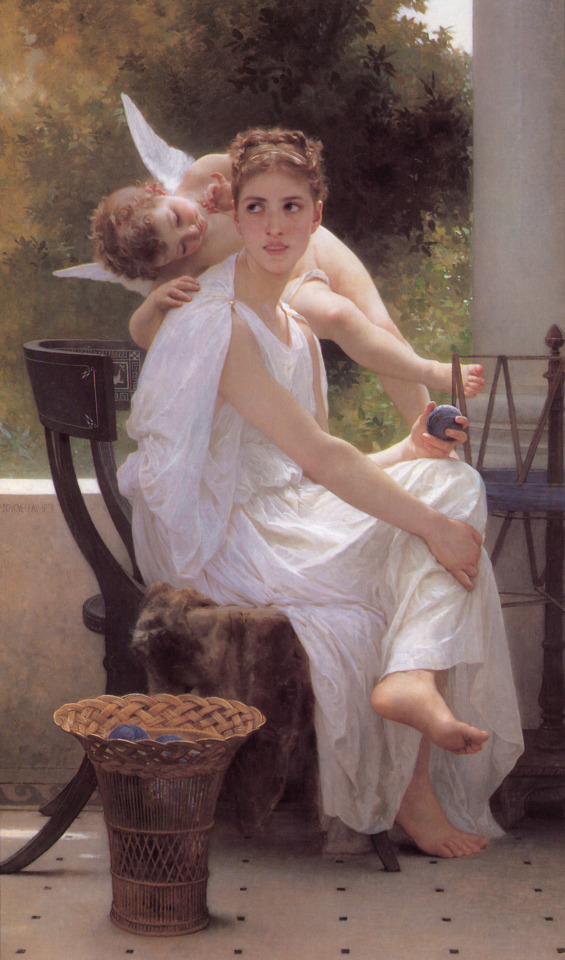
William-Adolphe Bouguereau
Le Travail interrompu - Work Interrupted (1891)
#william adolphe bouguereau#work interrupted#women in art#art#paintings#oil paintings#19th century art#19th century painting#1800s art#1800s painting#1800s#late 1800s
4 notes
·
View notes
Text
Happy Hour
“Work time is over, time for happy hour!”
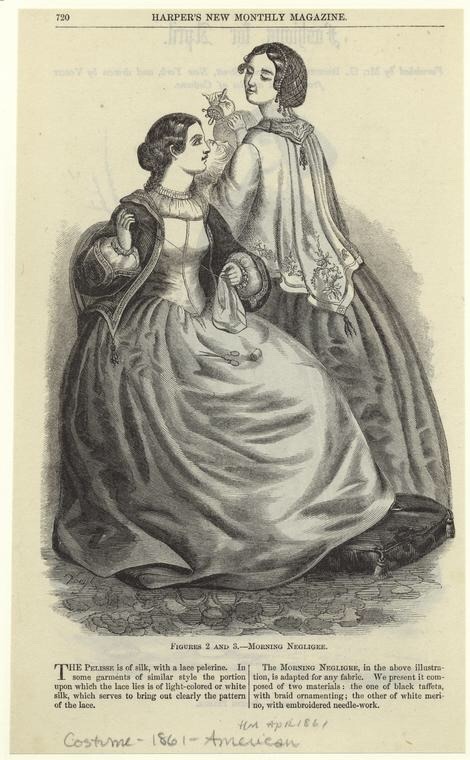
View On WordPress
4 notes
·
View notes
Text
Mrs. Rattenshaw: 'Tisn't much I've got to offer you, but such as it is, you're heartily welcome. Will it be poached eggs, now, and a bit of bacon, or fried ham, and potatoes in their jackets?
Maud: Oh, poached eggs I think, thank you; don't you papa? [Aside to him] I don't know what she means by potatoes in their jackets.
-
Lucy Whitehead, Granny (c.1890)
#100plays#granny#lucy whitehead#1890#victorian theatre#theatre quotes#one of a multitude of single act plays published by Manchester based Abel Heywood & Sons in the second half of the 19th century#the later victorian era saw an explosive growth in work for the theatre as rail expansion and electric street lighting made theatres more#accessible to the masses and historical restrictions on licensing began to be relaxed. but the boom wasn't restricted to the theatres#themselves; printworks had advanced too‚ with mass publications now more easily (and cheaply) achieved. enter Abel Heywoods‚ who seized on#the market for producing scripts that could be enacted in the home (as parlour entertainments) or were suitable for amateur dramatics#groups to stage: the Heywood pamphlets all state clearly that no fee was required for any group wishing to stage a performance of one of#their licensed works‚ so long as any announcements‚ advertisements or programmes carried the name Abel Heywood and that of the specific#author of the piece. thus hundreds of one act plays‚ mainly farce or melodrama‚ sometimes anonymously published‚ and with such hair raising#titles as: Mrs. Tubbin's Cat; A Learned Woman (a farce...); The Lost Umbrella; Mixed Pickles; The Haunted Bedroom; and personal favourite#In Slippery Places. looking through the catalogue of titles (every Heywood pamphlet carried a long list of available plays) some common#themes appear. there are the temperance plays (a popular issue of social concern in the mid to late 1800s)‚ there are 'rural dialogues'‚#multiple mentions of a 'screaming farce' and‚ regrettably‚ a good deal of highly offensive racist titles (presumably minstrel plays).#one positive‚ though‚ is the high number of female names attached to plays. whilst theatre was still a very difficult area for women to#break into as creators‚ the less competitive but high demand area of writing for mail order amateur dramatics proved a place where women#like Lucy Whitehead could be published and hopefully see their work performed. there isn't a great deal to Granny; a slight comic scene#in which one of a pair of star crossed lovers must disguise himself as an old lady (that english obsession with drag as comedy‚ apparently#it's always been popular) until an inevitable showdown with much silliness and shouting. Whitehead provides a comedy commoner#(another ancient theatre tradition) in the form of plain spoken Mrs Rattenshaw. I'll admit the line about jacket potatoes took me by#surprise; just one of those things‚ but the term is so familiar to me that it hadn't occurred to me that it would be alien to some.#a little digging hasn't provided much info on the original use of the phrase‚ but it would have been common enough in the UK by 1890#when baked potatoes were in fact a very popular street food‚ sold by vendors across the country (10 tons a day in London per wiki!)#perhaps the joke here then is on fine lady Maud‚ a gentle dig at her posh upbringing but lack of worldliness?#perhaps. alas despite a lot of research I've found almost nothing out about Whitehead or the play‚ and only a single reference to its#having been published in 1890 (the Heywood pamphlets carry no details that can accurately date them‚ but 1890 certainly fits with the style
2 notes
·
View notes
Text
brain got fucking fried as hell the fuck *insert image of a cat that looks so sickly*
#crow talks#cant. think.. so much info that is useful for what i needed but also most of it wasnt needed for what i needed#is this what college people feel like cramming in final touches on their thesis????? yuck.#im not ever doing that when if i ever go to college im gonna work on it like a good student#i managed to write two 3-5 sentenced paragraphs out of the needed 3. whauh.#i needed to find sources as well so i was speed reading and taking in info like it was a trash collect w trash#all three intersected so i was just in a fucking limbo bro#im kinda giving up. if the teacher asks why i didnt work on the last one i'll just tell her i started working on it yesterday bc i got busy#w math assignments. which is true btw (u guys saw me)#women's roles in the 1800s connected to colonialism and also the workning class wso i was just........ yueha#my brain just straight up crashed whilke i was taking in the information so im deciding to just give in.#if i suck i suck wahooo
1 note
·
View note
Text
In the summer of 1885 female factory hands at Amamiya Silk Reeling Company in Kōfu temporarily walked off the job to protest the capricious conduct of male supervisors who showed favoritism toward "the fair of face" and treated plain-looking women harshly. A year later on June 12, 1886, nearly one hundred factory girls again marched out of the Amamiya filature. This time strikers sought refuge in a local temple, where they discussed their grievances and plotted strategy. The women were angry that the mill's owner intended to reduce wages while adding thirty minutes to the workday. Nor were they pleased with a long list of fines that ownership threatened to impose on workers who did not comply with the new regulations or with a rule that once hired, a woman would not be allowed to take a job at a different mill for one year.
... The number of strikers at Amamiya quickly doubled to include virtually the entire work force. With no way to keep the filature open, the owners' mediators agreed to meet with the strikers' representatives. At first, management suggested that it would preserve the 4:30 AM to 7:30 PM work day if the women would accept a 30 minute lunch period and the elimination of most toilet breaks. The workers balked at that idea, and after long hours of negotiation the owner of the Amamiya mill dropped plans to lengthen working hours, eliminated new regulations that would have imposed heavy fines on women who arrived late (or left early) by even a few minutes, and promised to consider "other ways to improve conditions."
... The confrontation between labor and management in Kōfu received just momentary coverage from the nation's press before receding to the hazy fringes of Meiji history. Such fleeting attention was a disservice to the young women at the Amamiya filature since their walkout in 1886 constituted the first organised industrial strike in Japanese history."
James McClain, Japan, A Modern History, 2002
1 note
·
View note
Text
Literally don’t talk to me about how uncomfortable Victorian women’s fashion was unless you’ve had a Victorian outfit tailor made for your exact measurements, you’ve broken in your corset, and you wear it for a whole day or I will stab you 13 times
#people acting like Victorian women didn’t work#smh#do they not see maids in tv shows and learn about women in factories in school#idiots#you think it would be possible to work heavy machinery if your corset is cutting off your air supply and chopping your liver in half??? NOOO#and what do you think women with heavy busts did??? THEY WORE A CORSET#BECAUSE THE PRIMARY FUNCTION OF A HISTORICAL CORSET IS BUST SUPPORT#if you really want to make a tight lacing story just make a retelling of empress sissy of austria#she lived in the late 1800s and was known to take fashion trends to the extreme as a form of sh#she had custom made leather corsets bought for her so she could lace herself tighter but they’d break in a week and she’d need a new one#her doctors and friends and family and maids begged her to stop but she never did#and tight lacing isn’t even inherently bad 😒 if you think it is then get ready to also boycott stiletto heels#bc stilletto heels hurt more than a tightly laced corset 🙄🙄🙄🙄🙄🙄🙄🙄🙄🙄🙄🙄
0 notes
Text
been seeing some stuff on blue eye samurai and big yikes to nearly everyone pushing extremely western ideals onto these characters.
this is early edo period. 1600s. the japan you know now did not exist yet.
yall. please. there was NO concept of sexuality in pre-modern japan. that came with both the influx of christianity and western influence very very late in history. like, mid-1800s. (yes, there was christianity pre-1800s but it was not a widespread idea yet and wouldn't be until about the 1800s since, y'know, missionaries were routinely murdered before then)
"so and so is either bi and hasn't figured it out yet or..." no. that isn't how it worked then. nobody gave a shit what was between your legs. anyone could be attracted to anyone else. it was a little more common for male homosexual relationships to be between an adult and younger male - like many other places around the world - but two adult men could bang and love each other just as easily. relationships between women were quite common - especially since so many men were often away at war. there's tons of pornographic prints from the time depicting all manner of fun queer relationships. sex itself had absolutely no moral assignment to it. good sex was good health. it didn't matter who with. (well, social class/caste mattered more than anything else tbh but that didn't stop upper and lower class from fucking.)
that isn't to say people didn't have preferences. of course they did. that is human nature. preferences arose more from physical appearance, caste, and circumstances with gender being about the last thing one would look for in a partner - romantic, casual, or otherwise. the only role in sex where gender actually mattered was for procreation.
there would be no queer awakening moment, no sudden switch flipped, no stigma to have internal conflicts about because it simply did not exist as a concept whatsoever. you were either attracted to a person or you weren't, it was that simple. gender played no role when it came to sex and sexual attraction. the japanese were lightyears ahead of western cultures in this particular area - like most cultures were before christianity came in and ruined everything with its backwards morals and strict good/evil dichotomy.
yall have got to realize queer rep will not and should not always adhere by modern western standards.
there was no straight, gay, bi, or anything else of the sort. the closest they ever got was referring to roles during sex - as in who is giving and who is receiving.
i know this is mostly a made up story but it is still set within a very specific time period and culture, which should be honored and respected by not making it fit into our box. tons of research went into making this show historically accurate (albeit with some discrepancies but tbh they aren't really that huge) right down to the calligraphy writing. please please please don't whitewash the culture from these characters.
i say this mainly because without this knowledge, so many of you are going to build these characters up on a foundation they aren't meant to be on and then you'll rage about queerbaiting and bad queer rep if it isn't somehow super explicitly stated, if it doesn't match your very modern, very western ideal of what queer looks like. don't try to force this plot and narrative and characters into something they canonically and historically aren't. headcanons are a thing, AUs are a thing, fanfiction is a thing - leave your western thinking for those and let these characters simply exist as they should otherwise. this is one of those times where the queerness really does not need to be examined at all beyond what we get.
i know it can be hard to wrap your head around - sexuality is such a huge part of our identity in the western world and has slowly started to spread amongst other parts of the world in importance. but just keep in mind with these particular characters, that concept would be so very alien to them.
2K notes
·
View notes
Text
PSA to all historical fiction/fantasy writers:
A SEAMSTRESS, in a historical sense, is someone whose job is sewing. Just sewing. The main skill involved here is going to be putting the needle into an out of the fabric. They’re usually considered unskilled workers, because everyone can sew, right? (Note: yes, just about everyone could sew historically. And I mean everyone.) They’re usually going to be making either clothes that aren’t fitted (like shirts or shifts or petticoats) or things more along the lines of linens (bedsheets, handkerchiefs, napkins, ect.). Now, a decent number of people would make these things at home, especially in more rural areas, since they don’t take a ton of practice, but they’re also often available ready-made so it’s not an uncommon job. Nowadays it just means someone whose job is to sew things in general, but this was not the case historically. Calling a dressmaker a seamstress would be like asking a portrait painter to paint your house
A DRESSMAKER (or mantua maker before the early 1800s) makes clothing though the skill of draping (which is when you don’t use as many patterns and more drape the fabric over the person’s body to fit it and pin from there (although they did start using more patterns in the early 19th century). They’re usually going to work exclusively for women, since menswear is rarely made through this method (could be different in a fantasy world though). Sometimes you also see them called “gown makers”, especially if they were men (like tailors advertising that that could do both. Mantua-maker was a very feminized term, like seamstress. You wouldn’t really call a man that historically). This is a pretty new trade; it only really sprung up in the later 1600s, when the mantua dress came into fashion (hence the name).
TAILORS make clothing by using the method of patterning: they take measurements and use those measurements to draw out a 2D pattern that is then sewed up into the 3D item of clothing (unlike the dressmakers, who drape the item as a 3D piece of clothing originally). They usually did menswear, but also plenty of pieces of womenswear, especially things made similarly to menswear: riding habits, overcoats, the like. Before the dressmaking trade split off (for very interesting reason I suggest looking into. Basically new fashion required new methods that tailors thought were beneath them), tailors made everyone’s clothes. And also it was not uncommon for them to alter clothes (dressmakers did this too). Staymakers are a sort of subsect of tailors that made corsets or stays (which are made with tailoring methods but most of the time in urban areas a staymaker could find enough work so just do stays, although most tailors could and would make them).
Tailors and dressmakers are both skilled workers. Those aren’t skills that most people could do at home. Fitted things like dresses and jackets and things would probably be made professionally and for the wearer even by the working class (with some exceptions of course). Making all clothes at home didn’t really become a thing until the mid Victorian era.
And then of course there are other trades that involve the skill of sewing, such as millinery (not just hats, historically they did all kinds of women’s accessories), trimming for hatmaking (putting on the hat and and binding and things), glovemaking (self explanatory) and such.
TLDR: seamstress, dressmaker, and tailor are three very different jobs with different skills and levels of prestige. Don’t use them interchangeably and for the love of all that is holy please don’t call someone a seamstress when they’re a dressmaker
#sewing#historical sewing#sewing knowledge#writing guide#PSA to writers#historical fiction#fantasy writing
713 notes
·
View notes